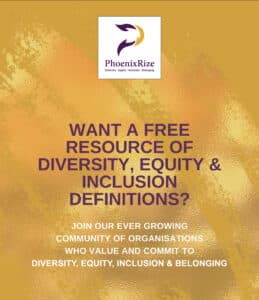Diversity & Inclusion at Christmas
As we near the end of the year, the is much focus and hype around Christmas. Many businesses will close over the Christmas period while people take time off to stay at home and spend time with their loved ones.
However, even though Christmas is the culturally dominant holiday at this time of the year, it is by no means the only one or is it celebrated by all. As we live and work in a multicultural society, it is important for us all to realise that December is a month that contains within it a plethora of religious holidays from many faith traditions. While you may be celebrating Christmas, others are celebrating Hannukah, Kwanzaa or Pancha Ganapati – and still others don’t mark any holiday.
There is an approach to diversity which eliminates all holidays from the workplace, but that is not reasonable or practical. People will always want to celebrate the holidays, religious or otherwise, that matter to them. Whitewashing them away is not the answer.
Instead, use this time of year as an opportunity to learn about the cultural traditions of those on your team. The first thing we need to be careful of is making assumptions. A person’s origin does not guarantee that they are a member of a particular faith tradition. There is a vibrant Muslim community here in Ireland, just as there is a large Christian community in India. Before you assume a person’s faith or tradition, open a relaxed conversation about how they plan to spend their winter break.
Regardless of culture or faith, there are many things that are universal at this time of year. When we have some time off, we like to spend it with friends and family or take a well-deserved holiday. These are conversations that we can all engage in, so don’t be afraid to raise the question because you might not share the same traditions.
It’s interesting to consider the Western traditions associated with Christmas. You may know, for example, that up until the 1880’s Santa Claus was usually depicted in either green or brown, that all changed when cartoonist Thomas Nast drew a cartoon of Santa in red for Harper’s Bazaar in 1881. The artist Haddon Sundblom then cemented this image of Santa in the drawings he created for the Coca-Cola company in the 1930s.
Turkey, the most traditional of Christmas fare, became tradition, along with a great many other things, when it was immortalised in Charles Dickens, A Christmas Carol in 1843. In fact, carols themselves were only a new fashion at the time.
I could go on about the origins of our Christmas traditions. The point is, however, that just because we have always had turkey, or whatever it might be, it is certainly not the only tradition. Nor has it always been so. Customs and cultural traditions evolve over time, they always have. But we need to have an open mind to allow this to happen.
I, for one, love hearing the different traditions enjoyed by different people around the world at this time of year. Whether it be an interesting way of gifting presents, traditional stories or a delicious recipe, everyone has something to share about their own way of enjoying this time of year. Take some time, before you finish up for the holidays to share with your work colleagues, over lunch, what you most look forward to at this time of the year.
The time you take to inquire and learn about other traditions at this time of year can create a solid foundation upon which to develop interpersonal relations within your department in the new year. At the end of the day, we are all people, we all have a story – and being able to share that in a safe environment makes us feel more accepted and a more integral part of the team, which helps people to do their best work.
I would like to take this opportunity to wish all my readers a happy and safe holiday break – however you choose to spend it.
Looking forward to working with you in the new year.
Adaku.


